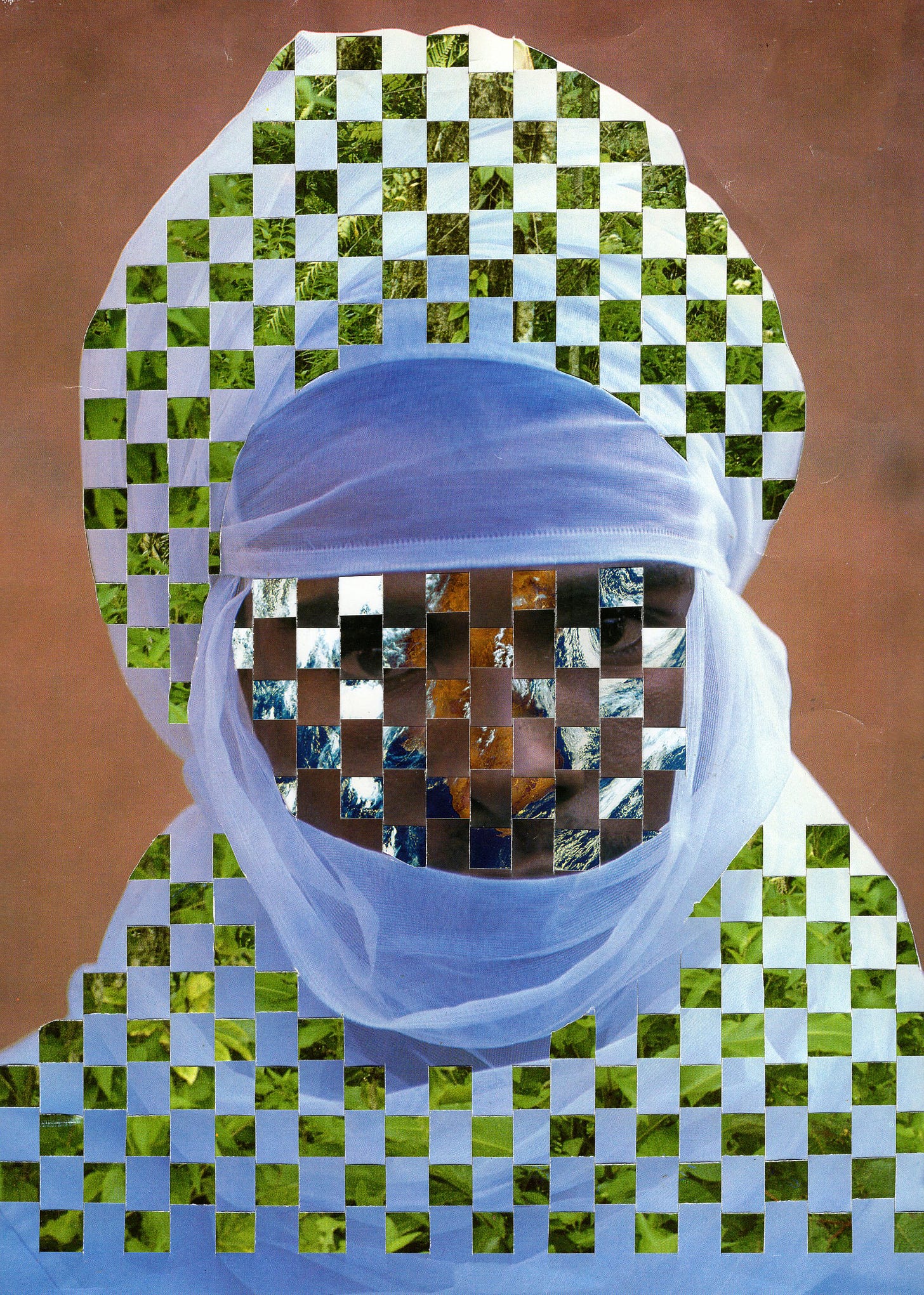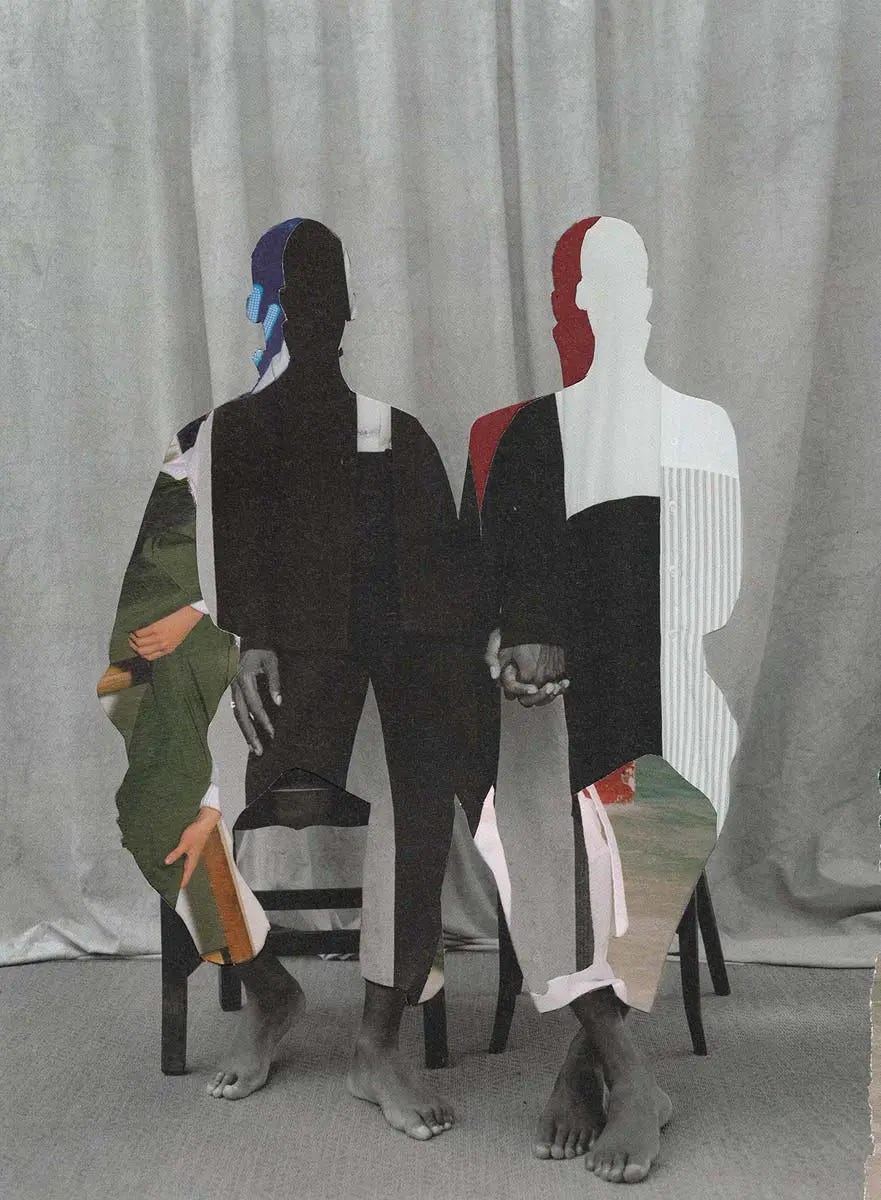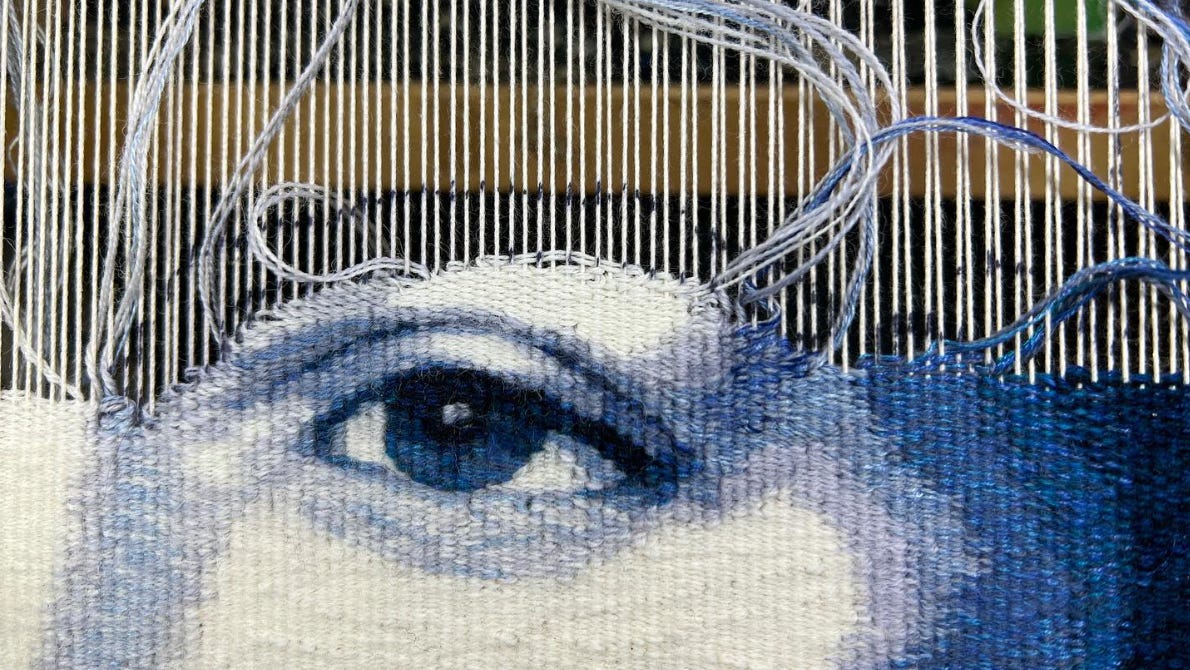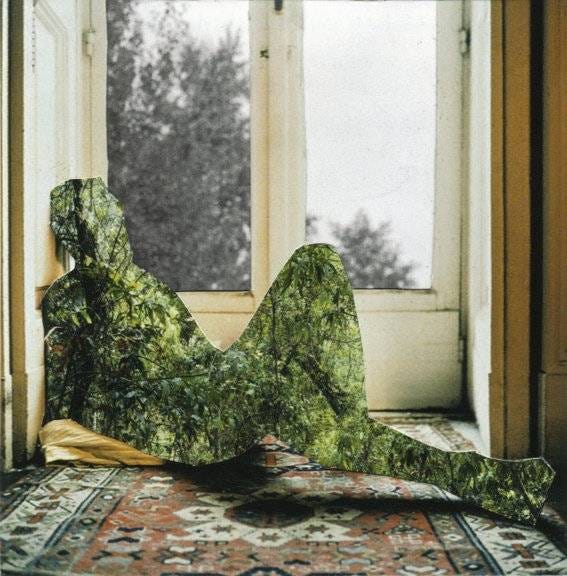Relational Identity: Ecological Intersectionality beyond the Nation State
In the Crisis of Individual Self

“The individual is the genius of conventional psychology, the bride of the nation-state, the unit of the market economy, the obsession of salvific faiths, the recipient of institutionalized education, and the hero of the modern narrative.” — Bayo Akomolafe
Making of an Individual Self
Entangled in the depths of the metacrisis, we find ourselves questioning everything our systems have produced and the industrial operational success that is promising us the 6th mass extinction. The ongoing brutality, wars, and ecocides have exposed the uncanniness of entrenchment with our nation-state identities.
On the one hand, civil status enables us to demand a ceasefire, peace, abolition, freedom, and equality. Within the nation-state framework, citizenship is typically defined as a legal status that grants specific rights, privileges, and duties to an individual by virtue of their membership in a particular sovereign political community. This includes rights such as the ability to vote, access to public services, and legal protections.
On the other hand, we continuously experience governmental decision-making as an ongoing betrayal of humanitarian and ecological boundaries, funded by the citizens themselves. Nation state cannot exist without citizenship being at the core of it, yet the nation state is what traps citizens into enduring its decisions. We have witnessed in the past years that civil status grants little security to peacefully protest and oppose the choices of our governments. Just Stop Oil peaceful protesters face up to 5 years in prison, while advocating for the transition away from fossil fuel. In today’s nation-state, an individual is prosecuted for attempting an act of collective liberation, for present and future generations.
“Identity is not a self contained unit. Identity is a relationship between people and history, people and communities, people and institutions.<..> The better we understand how identities and power work together from one context to another, the less likely our movements for change are to fracture.” — Kimberlé Crenshaw
Some theories, such as intersectionality theory recognize the plurality of our identities. Intersectionality is a theoretical framework, originated by Kimberlé Crenshaw, stating that various forms of social categorization and identity markers, such as race, class, gender, sexuality, disability status, etc., do not exist in isolation but are interwoven and intersect in people's lived experiences.
The core idea behind intersectionality is that the combination and intersection of multiple identities can produce compounded and distinct forms of discrimination, oppression, and marginalization that are not adequately captured by examining any single identity dimension alone. Identity is linked to patterns of inequality, especially when used as a tool of categorisation.
Theorists like Laura Pulido have advanced to "intersectional environmentalism" which analyzes how injustices faced by marginalized human groups are interconnected with the unsustainable exploitation of ecological systems. However, extending intersectionality into the ecological/multispecies realm remains an emerging and underexplored area compared to its core applications examining intersecting human identities and social categorization systems.
Crisis of the Self: Entanglement of Identity
Yet, identity is not a static Venn diagram of overlapping categories. Identity is much more mutable than we think. Something that globalization and identity politics have brought to the surface is that the coming decades will drive a singular identity into obsolescence. In the near future, migration, refugee crisis, globalization, wars, climate emergencies, and technology will push the boundaries of what it means to be of one identity and of one citizenship, for better or for worse.
We want to build on this speculation by borrowing from Bruno La Tour’s Actor Network Theory (ANT). ANT helps us see the world as a complex web of interdependencies where everything (people, objects, ideas) interacts and shapes each other in various ways. It's a tool for analyzing these interactions without assuming that humans are always the central or most important element.
“The concept of actor-network captures the idea that for any actor to act, many others must act as well. In other words, action is shared with a multitude of people and things – for, indeed, things play a part in our collective lives. Actors, whether individual or collective, whether human or not, are therefore a mystery whose constitution must be explained; they are not at all the obvious starting point of action. <..> ANT borrows from French narrative theorist A. J. Greimas the term actant, by which it highlights the fact that the ability to act is not a feature of one’s nature (i.e., being a human, [a more-than-human,] an object, or anything else), but rather a relational feature; said otherwise, an actant is anything that makes a difference in a situation.”
In this instance, we could argue, that at the core of identity is a network of a) relationships between internal human-psyche parts; and b) relationships that happen between us and other humans and non-humans. If we perceive identity as a network of relationships, we can imagine a tapestry, where every string is always moving, and its movement influences and is influenced by other strings. In essence, our identity is inherently relational. We don’t need this to be proven by a theory — we are in a relationship from the moment we are conceived.
The genes active in our bodies and in our lives are not ours, as we have seen, and if we include the metabiome, of bacterial and viral genes, then the number reduces to less than one percent. And if we look one level deeper, to the genes responsible for the construction of mitochondria and flagella, we must realize that the heritage we carry around is genes from a whole ecosystem of the past. We consist of histories that are not our history, of bodies that are not our body, but we are only able to exist in this way, as selves that are paradoxically not themselves.
<…> we must accept the consequence that our self dissolves into the other and that only the other enables self. In our center we are void like the innermost point of a water vortex. Organisms are so deeply rooted in the other that a living being in its core is made up of that which it is not. — Andreas Weber, The Biology of Wonder
Not only our identities are found in the other. The other also finds its identity in us. As much as our identity is distributed through human and non-humans, so are we the container, or host, for other’s identities.
Here, decentralization and distribution of identity becomes an interesting focal point for Relational ID speculation. We can draw an example with technology too. If one builds an app on the Holochain protocol, by design, the users of the app will own all of the data. This is the true revolution of data distribution and decentralisation—the data that one user produces will not be owned by the app developer, but each user (agent, in Holochain terms) will hold an encrypted version of this data on their device (with no personal access to it). Same way, I, as a user will host fractions of data from other users. And even if one user decides to remove themselves from the network, the data gets redistributed among the remaining agents. Our identities are distributed in the networks of relationships in similar ways.
Our identities don’t belong to us, they belong in the movement between our relationships. They are situated in very specific contexts, time, and relationships that can only exist in this particular combination. Rarely do we think about the entanglement with our local grocery store, or a train driver in our city or town and how these “trivial” comforts of modernity allow us to either change or uphold our identities — physical and intellectual.
Rarely do we ponder about the beings and plants of deep time that fuel our gasoline tanks and power our lives and our identities today. Let’s say a forest from 1 million years ago has happened to support (in the form of fossil fuel) that specific plane flight that allowed you to move to another city or country, and this move consequently has completely changed you as a person. Even if it feels conflicting, it’s true. Here identity becomes expanded: not only do we inherit our identities through relationships with our ancestors; but our identities are also inherently entangled in relationships of deep time with other non-human beings.
Our bodies are a testament to millions of years of relationships. Our identities are developed, upheld, and destroyed by our relationships. Nothing escapes the relational nature.
Relational Planetary Self
“The planetary is how we intuit, embody, conceive of and ultimately concretise the interagency of the human with the non-human world. The planetary helps us consider how, in the age of the Anthropocene, the human being is involved in a process of mutual becoming: we are becoming the more-than-human as the more-than-human world is becoming us. This process of intensifying transparency between the human social imaginary and the commingling agencies of the non-human world is the new, uncanny reality of the planetary. We are being invited - some might say initiated - to not only recognise but also creatively realise this way of knowing and being in our time.“ — Jeremy D. Johnston, Becoming the Planeraty
In the spirit of speculative design, we propose a Relational Identity (ReID). Relational Identity includes ecological intersectionality, and at the same time moves beyond it. ReID challenges us to step outside of the delineated view of identity (or its intersections) and the self, inviting us to view identity as an ongoing sum of relationships: active, influential, and non-ending.
In the conversation with Bayo Akomolafe, Indy Johar connects the crisis of climate with the crisis of self, pointing out that without addressing the broken relationship between ourselves and the rest of the living world, we will fall short of bringing solutions that truly change our systems.
Here, the philosophy of self as a separate-from-other manifests into our language, which manifests into systems, institutions, property rights, extractive economies, and techno-solutionism.
Relational identity here serves as a token towards re-patterning our social imagination: from an individual as a static unit interacting with other static identity units, to an individual as a relational system in a web of larger, nested relational systems. This perception and philosophical change opens our language to influence our instituting patterns.
What do we mean by instituting patterns?
The history presents many examples of instituting patterns of extraction, racism, discrimination, as well as social and environmental inequality. Here, relationality doesn’t mean a utopian relationship between humans and nature. Relationality is the recognition of the complexity of consequences and influences that humans and non-human actors have on each other.
To continuously extract fossil fuels and to base our economy on a degenerative paradigm is to deny the relationship we have with other humans, future generations, and other species that continue to experience damage and extinction. Loss of non-human species not only brings about the loss of a particular species, it also disrupts and vanishes the relationships in which that species was embedded in.
Patterns of extraction and destruction have been protected by law and governments for centuries. We even don’t need to look back in history: colonialism, destruction, and extraction continue to be instituted patterns of relationships that many modernized countries profit from today. They can only work through negation and denial of relationship and relational identity, and operating on a premise that parasitic relationality is localised and contained in time. Globalization does not want to recognize global repercussions.
However, the consequences of the parasitic relationship model spill over the edges of the containment. The global north’s project of damage-localisation rapidly comes to an end in the global south, as we feel tendrils of late capitalism not only in our (western) environments and ecosystems, but also in our bodies and our clouds. “Fragments of plastic smaller than 5mm (around the size of a sesame seed) have been found in the furthest reaches of the planet and most intimate parts of the human body, including the blood, lungs, and placentas of pregnant women.” (Source)
This is how deep time finds its way into our bodies. Fossil fuel, a product of millions of years of decay, is now floating in our bodies in the microplastic form. Is that not a relationship too?
Hence, we ask: can we institute patterns that promote the recognition of relationality? Can we recognize and place relationality at the center of identity, ecosystems, public systems, governments, and decision-making processes?
In the heat of war and ongoing genocides, it is hard to believe that the collective human mind will be able to come to the recognition of relationality as a virtue. Relationality is not a concept that we need to learn – we are born into it. The process we are proposing now, is making these patterns of relationships conscious and intentional.
A Ministry of Service to Our Non-Human Relatives: This department is solely involved in ensuring the well-being of non-humans and is the most funded, the most primary and is given the most weight in all our decision-making processes. — Dr Lyla June Johnston (From Ministry of Imagination)
We propose four Relational Identity principles that can guide us towards instituting new ways of relating. (We are open to have these principles grow, adjust, and expand. If you would like to be involved in growing this capacity, please get in touch with us.)
Relational identity is not a utopian ontology, but a recognition that relationships can be extractive, discriminatory, and abusive, as much as they can be empowering, inclusive, and regenerative. The aim of relational identity is to transform the patterns of relationships from fundamentally extractive to fundamentally life-affirming (regenerative).
Identity is porous and relational. Identity cannot be formed without relationships to inform, reflect, and influence it. Identity is not static, nor impenetrable, it is fluid. It includes and transcends the binary.
Relational identity is embedded in time, space, and place.
Conscious relational self (CRS) recognizes more than human agents/actors as equals in deserving of life and reverence, as much as other humans.
We want to close with a quote from Indy Johar:
I think the question of self becomes really critical because we can no longer assume dominion but recognize ourselves in fractals of life. That means that there's a different relationship required and different way of being required in that cognition. I think unless we're able to deal with that, appreciate this meta life and our component, our place in that meta life, and also recognize our relationality, that's a profound change. <..> I think we have to challenge ourselves to recognize ourselves as being a multiple, multiple and entangled.
If you or your team would be interested in working further in developing the Relational Identity concept and principles further, in speculative, imaginary, real, institutional, bioregional, local, or cosmolocal ways (we welcome plural explorations) with us; if you have comments and additional thoughts, we welcome you to continue the conversation. Please reach out directly via email to joseph.m.culhane@gmail.com
If you would like to contribute to IRB’s financial support, please consider donating to the Institute of Relational Being here.
Thank you,
IRB Team










beautiful artwork